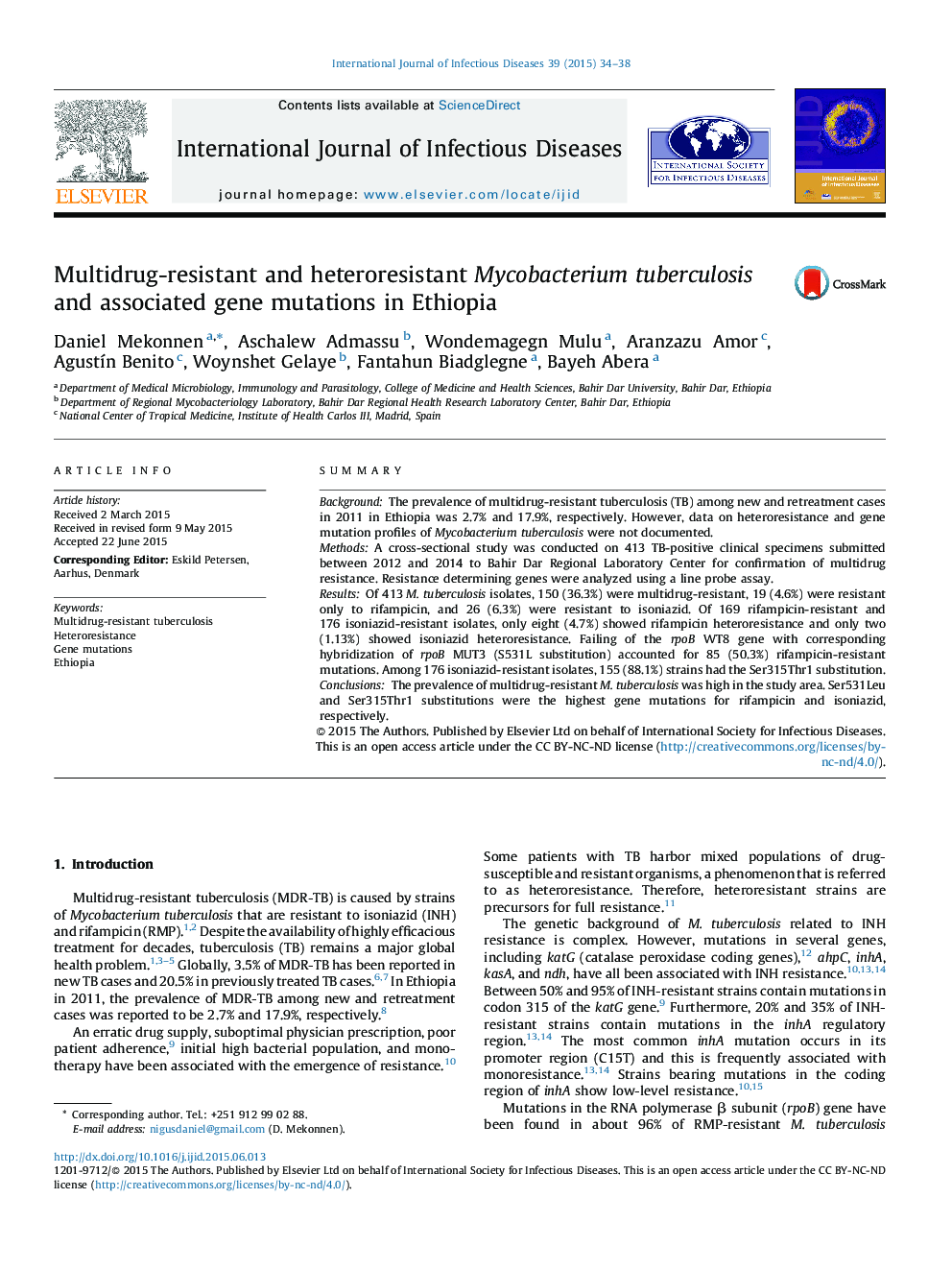| Article ID | Journal | Published Year | Pages | File Type |
|---|---|---|---|---|
| 3362021 | International Journal of Infectious Diseases | 2015 | 5 Pages |
•The prevalence of multidrug-resistant tuberculosis (MDR-TB) was 36.3% in Amhara National Regional State, Ethiopia indicating that MDR-TB is increasing with time.•Unlike the high prevalence of MDR-TB, the prevalence of rifampicin and isoniazid heteroresistance was lower at 4.7% and 1.13% respectively.•Ser531Leu substitution and Ser315Thr1 substitution were the highest gene mutations for rifampicin and isoniazid, respectively.
SummaryBackgroundThe prevalence of multidrug-resistant tuberculosis (TB) among new and retreatment cases in 2011 in Ethiopia was 2.7% and 17.9%, respectively. However, data on heteroresistance and gene mutation profiles of Mycobacterium tuberculosis were not documented.MethodsA cross-sectional study was conducted on 413 TB-positive clinical specimens submitted between 2012 and 2014 to Bahir Dar Regional Laboratory Center for confirmation of multidrug resistance. Resistance determining genes were analyzed using a line probe assay.ResultsOf 413 M. tuberculosis isolates, 150 (36.3%) were multidrug-resistant, 19 (4.6%) were resistant only to rifampicin, and 26 (6.3%) were resistant to isoniazid. Of 169 rifampicin-resistant and 176 isoniazid-resistant isolates, only eight (4.7%) showed rifampicin heteroresistance and only two (1.13%) showed isoniazid heteroresistance. Failing of the rpoB WT8 gene with corresponding hybridization of rpoB MUT3 (S531L substitution) accounted for 85 (50.3%) rifampicin-resistant mutations. Among 176 isoniazid-resistant isolates, 155 (88.1%) strains had the Ser315Thr1 substitution.ConclusionsThe prevalence of multidrug-resistant M. tuberculosis was high in the study area. Ser531Leu and Ser315Thr1 substitutions were the highest gene mutations for rifampicin and isoniazid, respectively.
